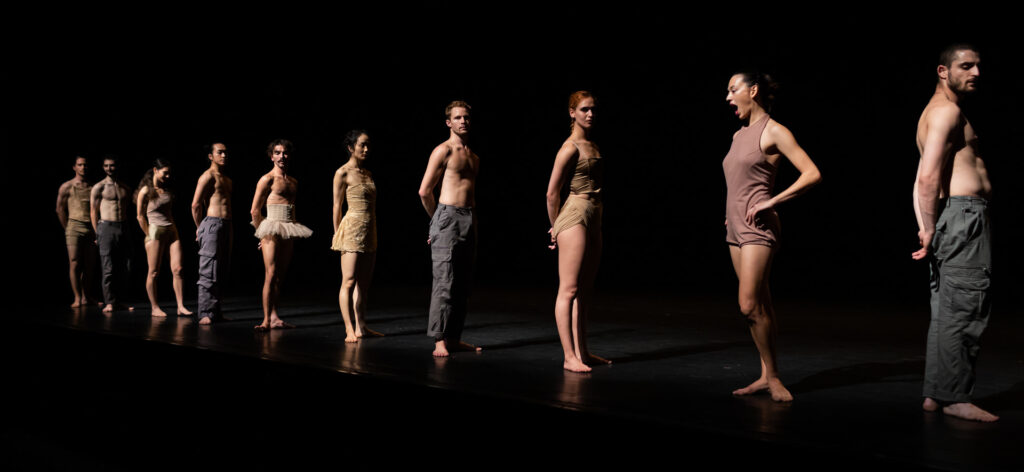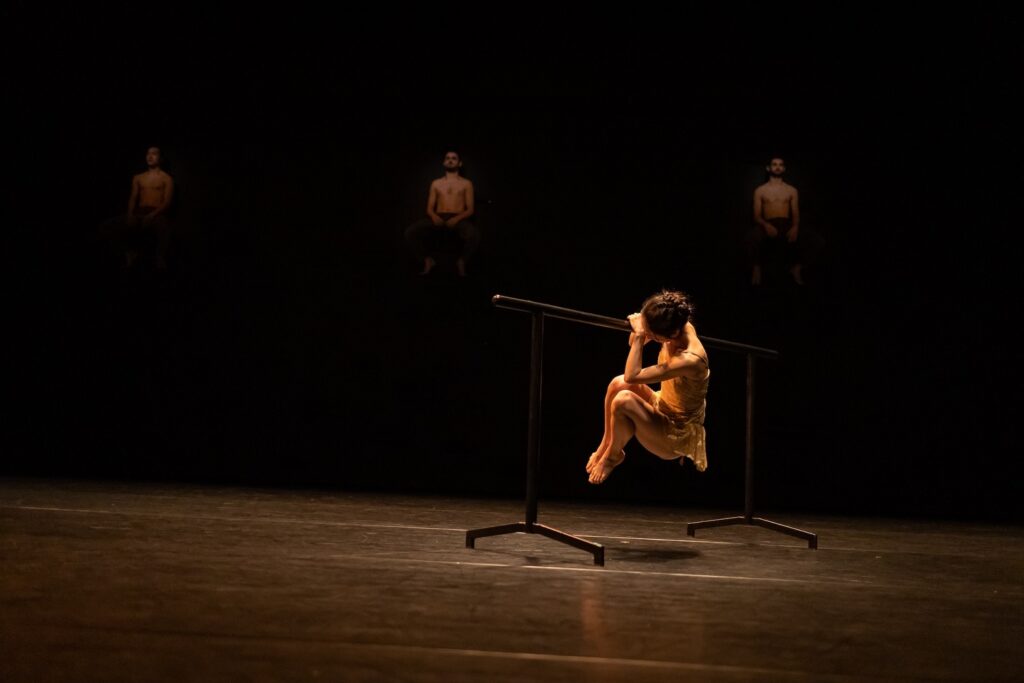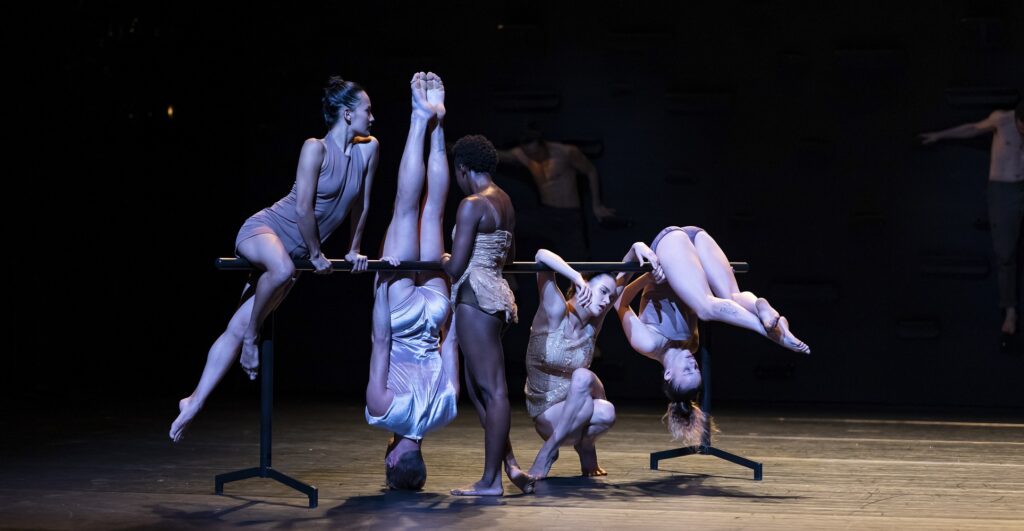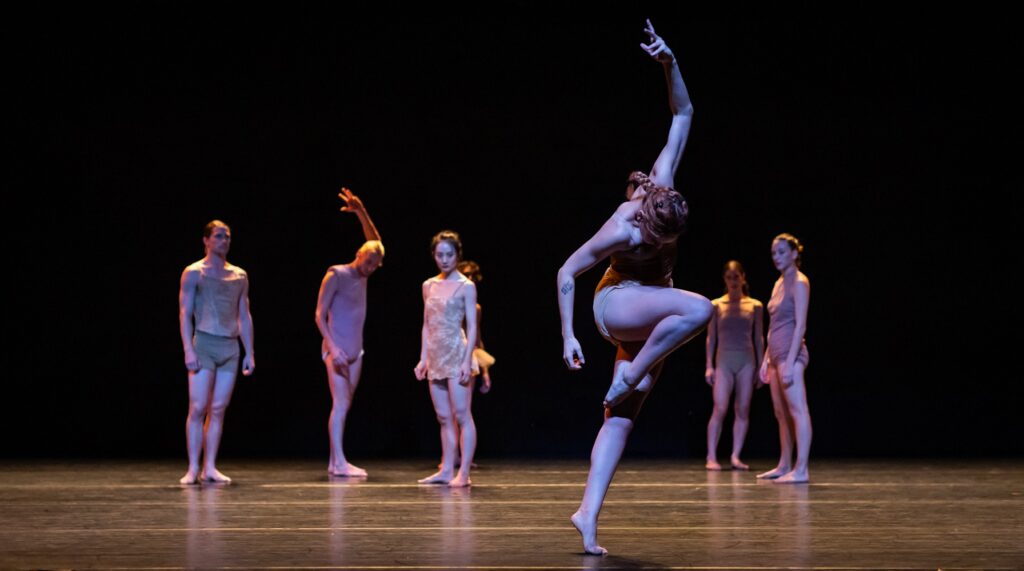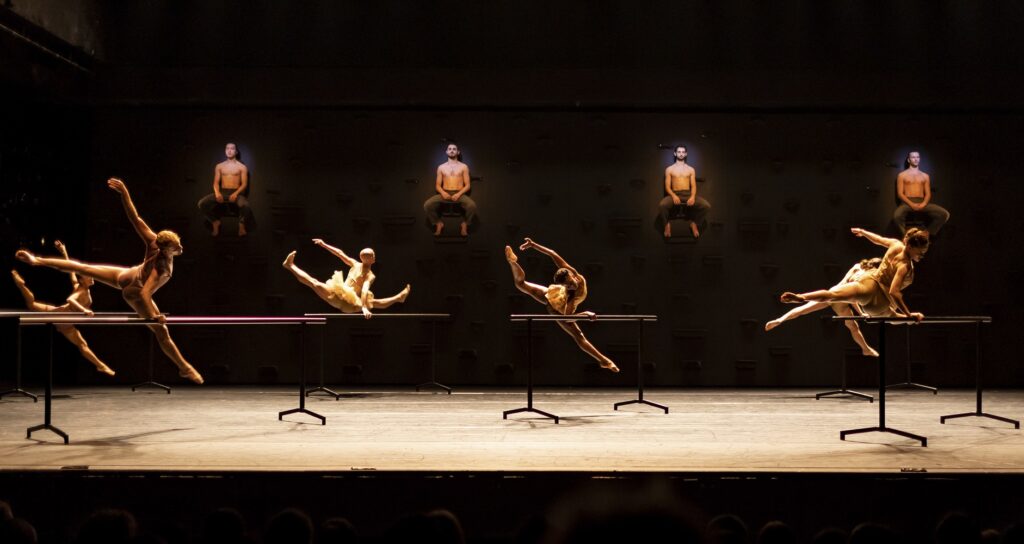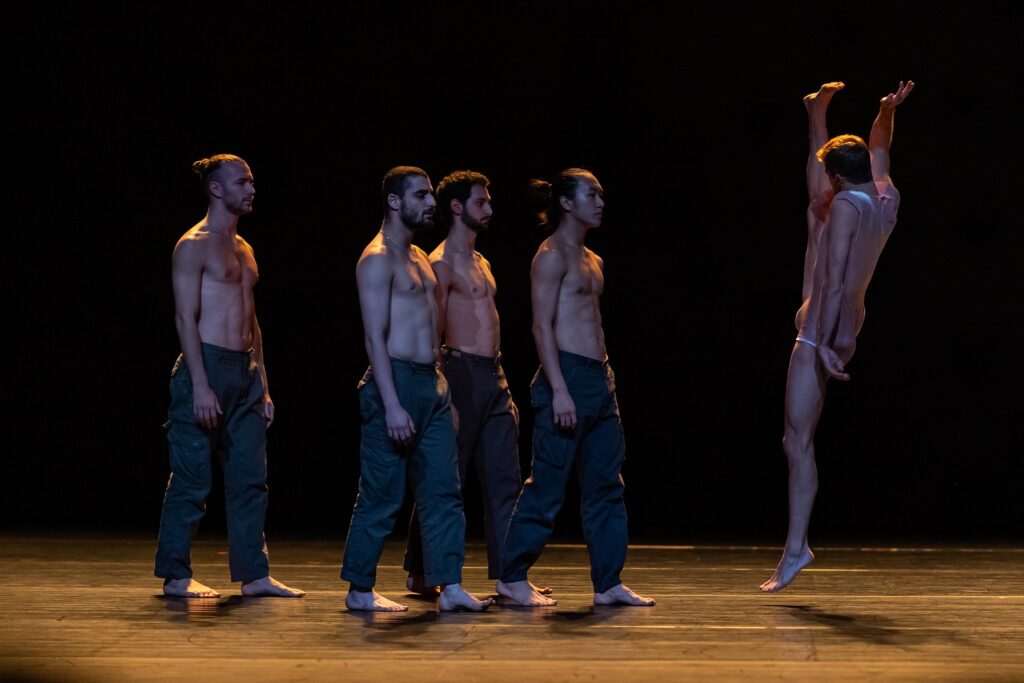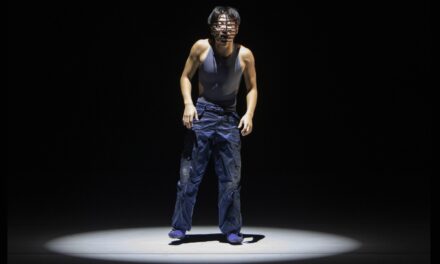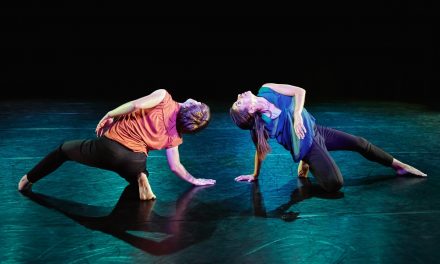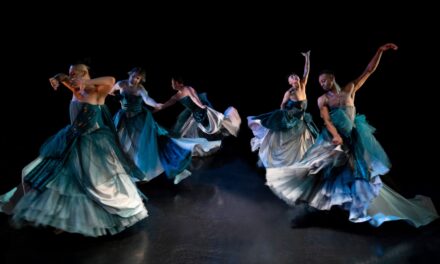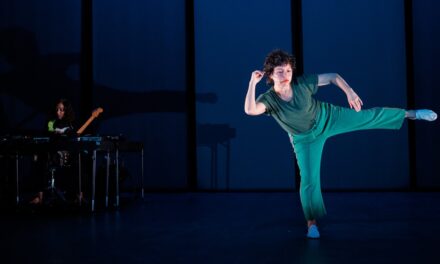Batsheva Dance Company made its Music Center debut with Ohad Naharin’s “MOMO,” before an enthusiastic crowd on Saturday, February 15th at the Dorothy Chandler Pavilion. It was sad to note that extra security was needed when entering the theater due to the ongoing conflict in Gaza.
Batsheva Dance founded by Baroness Batsheva de Rothschild and Martha Graham in 1964, rose to international status when Ohad Naharin became the Artistic Director in 1990. He notably created the dance technique known as Gaga, which emphasizes “physical awareness freedom and connection to the body, which has impacted contemporary dance by breaking traditional boundaries, promoting inclusivity and nurturing individuality,” all of which was evident in “MOMO.”
Before the lights had gone down and the audience was fully settled, a quartet of male dancers wearing loosely fitted pants, walked in sync onto the stage. They walked in various styles at an intentionally slow pace. Over this, the usual voiceover announcement pointing out the exits etc., was made as slowly the house lights dimmed, the audience quieted and the dancers got our full attention. This set us up for an evening of terrific and inventive movement but left us shy of any emotional connection. Utilizing an un-imaginative sound/music-scape compilation by Laurie Anderson and Phillip Glass, as designed and edited by Maxim Waratt, we were brought into an otherworldly plane in which we were not sure of anything other than the tempo, which seemed unvaried throughout. The set designed by Gadi Tzachor, consisted of a tall blackish climbing wall set upstage, which left the floor free for dancing. Appropriate lighting was by Avi Yona Bueno.
The four male dancers were connected through movement at all times as one by one the remaining company members joined, bringing their individuality with them. Dancer Londiwe Khoza, a stand out, dressed in bright yellow, brought her impeccable technique in what appeared to be a carefully thought out, yet improvised routine that added energy to the somewhat static stage. The remaining dancers entered singly, each wearing a costume that was apparently a reflection of their character. For example, Sean Howe, was barely clothed in a light pink feminine leotard, while dancer Igor Ptashenchuk arrived in a short ruffle like tutu. This comment on sexual orientation never got beyond the costumes. The female dancers wore variations of basic trunks and tops all designed by Eri Nakamura.
The dancers introduced themselves with short unique solos. Technically facile, all were terrific working within Naharin’s trademark style. The quartet who began the show continued moving as one unit, occasionally stepping into the spotlight and then returning it to another individual. Ideas of sexual behavior, wild abandonment, slow-motion movement, floor work, and carefree skipping among others, were energetically tackled and perfectly performed but, any underlying message was murky. However, when freestanding ballet bars were brought onstage a riveting display of cohesive bar work commanded our attention as the male quartet found a high perch on the upstage climbing wall. From there they gazed upon the action like spirits from above. When the quartet descended to the stage, they finally got a chance to dance, “full out with feeling,” perfectly in unison and beautifully rendered, it brought a great release of tension for one and all. The final line-up near the end also brought an unexpected sense of reflection and even nostalgia as eventually the dancers climbed the back wall and disappeared into oblivion.
However, because the narrative was weak much of the symbology was lost to us. In particular was the waving hands, a device that was used throughout and left us guessing as to why. Was this in farewell or hello? The spoken word moments also seemed awkward and forced. More explanation in the program notes might be helpful. Or better yet a graspable suggestion within the music or staging would go a long way in making these passages more meaningful.
In this case Naharin’s work was hit or miss, brilliant moments followed by confusing messages, fantastic choreography followed by indulgences, followed by scenes of such inspiration that you just might hold them in your memory for a long, long time. This ability is why Naharin has been in the forefront of the dance world for nearly forty years.
Many of the audience members thought that this piece was related to October 6th, but it was created well before this ongoing tragedy had begun. However, perhaps a creative work like this is what the beholder decides it is.
The top-notch company dancers not mentioned above are, Yarden Baeket, Adi Blumemreich, Emil Brukman, Nathan Chipps, Holden Cole, Guy Davidson, Iyar Elezra, Adrienne Lipson, Bo Matthews. Eri Nakamura, Sofia Pikalova, Danai Porat, Yoni Simon, Annika Verplancke, Gili Yaniv Amodai, and Yarden Zana.
For more information about Batsheva Dance Company, please visit their website.
For more information about Glorya Kaufman Presents Dance at the Music Center, please visit their website.
Written by Tam Warner for LA Dance Chronicle.
Featured image: Batsheva Dance Company in Ohad Naharin’s “MOMO” – Photo by ASCAF.


